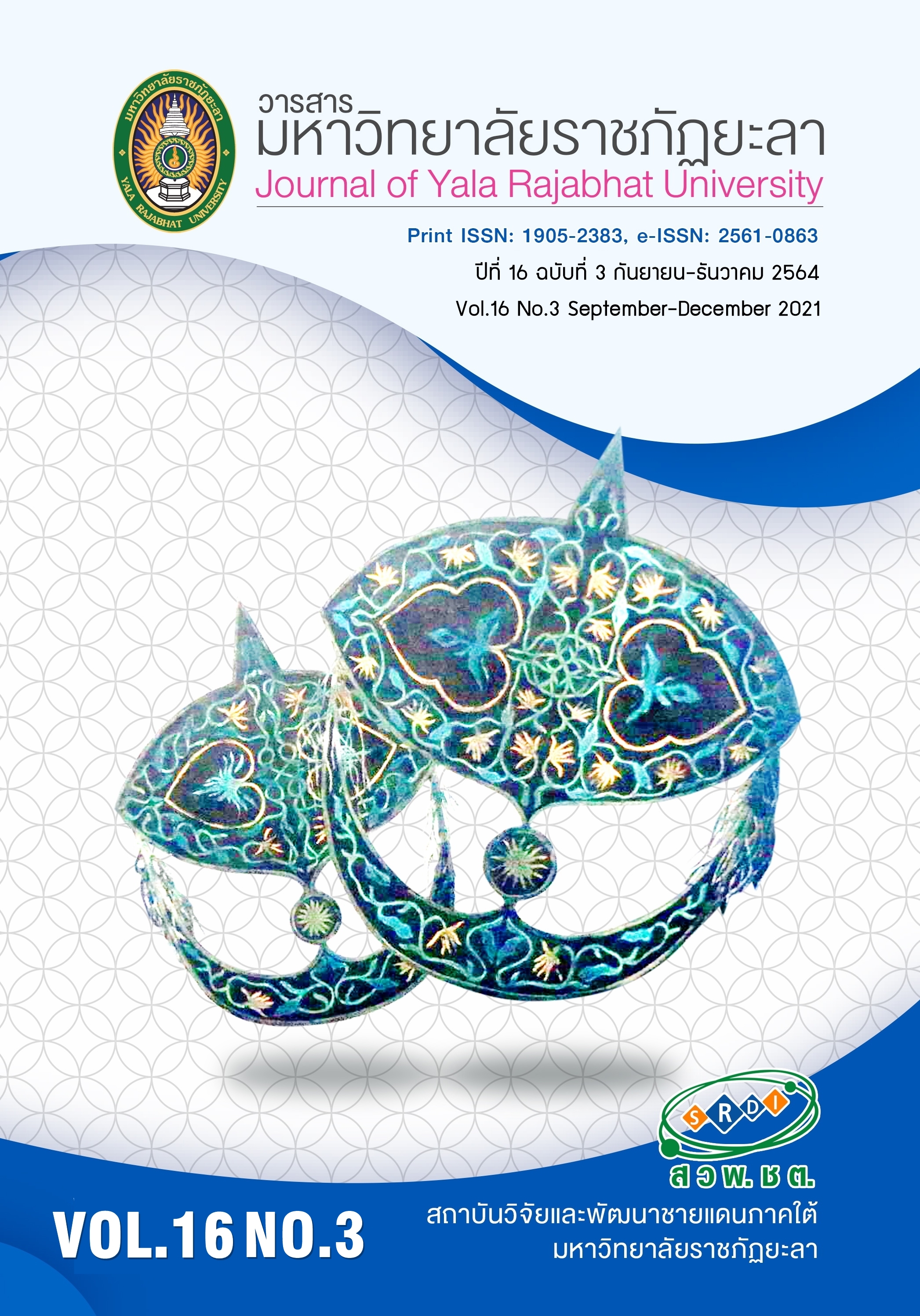The Little Free Pantry: New Normal Covid-19 Era Case Study of Yala City Municipality
Main Article Content
Abstract
The current situation of Covid-19, the suitability of little free pantry for helping people who had been affected from the pandemic. This research therefore, was conducted to study the origin, concept and method of managing the little free pantries and to study the donors’ behavior and the product recipients. The data were collected from the in-depth interviews of 10 initiators or founders, and also 400 questionnaires in each group. Data were analyzed by using statistics frequency, percentage and mean. The findings were revealed that the origin and concept were initiated by the news being seen in various media or received coordination from certain social assistance organizations, including the religious followers. The management methods consisted of 5 areas: Materials consisting of a pantry or filing cabinets, the varieties of donated products, the funding which derived from personal income, person responsible were mostly families, communities and organizations who donated the pantries. In terms of management, the rules were set in collecting of the goods. The behaviors of donors and recipients focused on the aims of the donors were to help the poor, they donated necessary goods needed to be purchased for an average of 2-3 times per month and the recipients were people who were affected from the pandemic, they strictly followed the rules by collecting the goods for an average of 2-3 times per week. Members of families were the main influence in terms of being the donor or the recipient. However, from the evaluation of the little free pantry concept, it showed that the numbers of donors were increasing, they were happy for being upper-hand and considered as merit makers. The recipients had not reported any problems on scrambling, they were happy and problems were reduced in terms of their living during pandemic. The result of this study can be used as a further guideline for the efficiency and effectiveness of the little free pantry.
Article Details
Copyright Notice articles, information, images, etc. was published in this Journal of Yala Rajabhat University is a copyright of the journal Yala Rajabhat University. If any person or deparment wants to bring all or part of it for publish or take any action. Authorization is required in written form from the Journal of Yala Rajabhat University only.
References
Apinunmahakul, A. (2015). Determinants of voluntary contributions in Thailand. Development Economic Review, 9(2), 31-53. (in Thai).
Arnstein, R. S. (1969). A ladder of citizen participation. Journal of the American Institute of Planners, 35(4),
-224.
Burapanonte, N. (2020). What is the pantry of sharing or the little free pantry and where does it come? Let's find out [Online]. Retrieved May 20, 2020, from: https://www.sanook.com/campus /1400500/. (in Thai)
Kanjanamusik, W. (2011). Carrying out social responsibility (CSR) activities that affect decision to buy goods and services of consumers in Bangkok. Master’s independent study. Bangkok University. (in Thai)
National Geographic Asia. (2020). “Give what you can, take what you need - the real principle of the little free pantry” [Online]. Retrieved May 20, 2020, from: https://ngthai.com/cultures/29314/thaifreepantry/. (in Thai)
Shikhumbawornchai, N. (2020). 4 ways family businesses can adapt to Covid-19 [Online]. Retrieved May
, 2020, from: https://www.efinancethai.com/MoneyStrategist/MoneyStrategistMain.aspx?id=R0Yw b2QzWmhkWWM9. (in Thai)
Suetae, A., Bin Nik Hassan, N. & Padaameen, S. (2017). Ethnic relations in border of Thailand – Malaysia. Journal of Islamic Studies, 8(2), 18-28. (in Thai).
Thai Trade Center of the Hague. (2020). Shelf-stable foods. The Hague: Thai Trade Center. (in Thai)
The Little Free Pantry. (2020). The little free pantry [Online]. Retrieved May 30, 2020, from: https://www.littlefreepantry.org.
Tossawut, T. & Mahiwan, P. (2020). The development of social quality of life of people and the prevention of the spreading of coronavirus infectious disease (COVID–19). Journal of MCU Nakhondhat, 7(9), 40-55. (in Thai).
Yala Provincial Statistical Office. (2019). General condition of Yala Province [Online]. Retrieved May 20, 2020, from: http://yala.nso.go.th/index.php?option=com_content&view=featured&Itemid=435. (in Thai)
Yenbumrung, N. (2016). Betong City: Strong Chinese-Thai people [Online]. Retrieved May 25, 2020, from:
http://www.furd.in.th/event/furd-city-awards/view/5PDq0L4X0gaX/. (in Thai)

